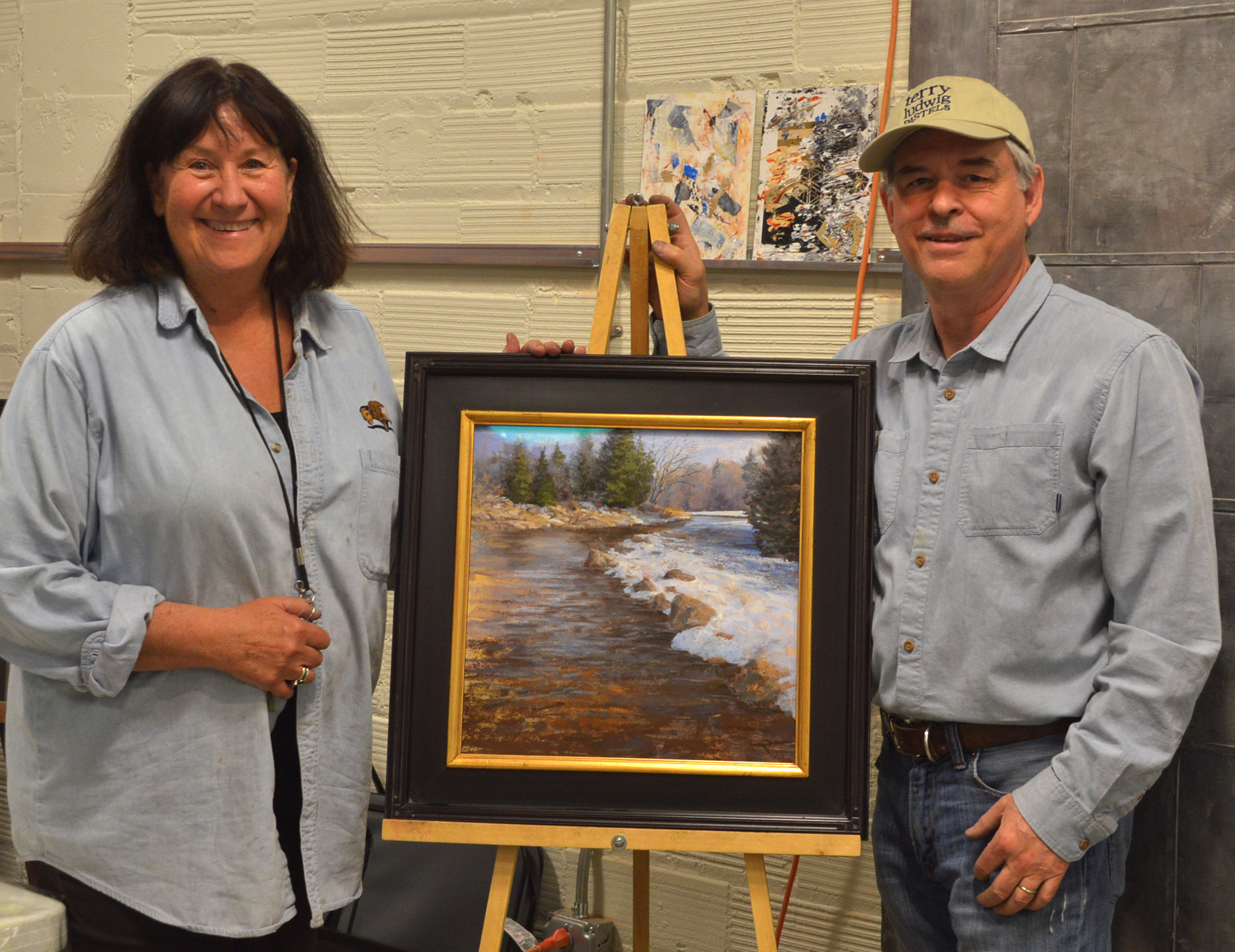Casper Workshop Success
Submitted by Gary on Wed, 04/06/2016 - 17:18

Casper Workshop Demo
|
Little by little I learn how to teach pastel to those who want to learn how to master this tricky medium. My recent workshop in Casper, Wyoming, turned out to be a big success according to both the number of attendees and the comments I received in the aftermath. We had a full class at the beautifully remodeled Art 321 center. Every seat was taken and each artist had just enough room to spread out their supplies and not bump into each other.
This time I began with some of my observations about being an artist and the how physical technique is partly an outgrowth of our mental image of what a painting should look like and part the materials we choose to work with. After that we experimented with making marks of different shapes and sizes on our paper using whatever pastels we had. Since this class was mostly for beginners I felt it important to stress all the possibilities of what can be done with these sticks of pigment. Many beginners are tempted to only use the pointy ends of the sticks. I tried to make students aware of the many other possibilities.
We learned to tone our pastel paper and some sample panels I supplied and then did under-drawings in charcoal. I demonstrated my method of under-painting in shades of gray washed in alcohol and some students were brave enough to try it. In a longer class everyone would have had ample opportunity to experiment with different under-painting methods but this was only a two day class so we had to move right along.
We spent some time on composition and massing values into interesting arrangements. We explored what it means to have some element of drama in a painting that catches a viewer's attention. that was the end of day one. On the second day we did more experiments with our pastels, creating shapes by massing in with the sides of our sticks and then creating blends by adding other colors on top. While they were simple exercises many commented later on how useful the exercises were.
Finally we proceeded to add color to the paintings we had begun on day one. I spent several hours in bits and starts working on a demo which gave me a chance to talk while I painted again about color, composition, technique and a myriad of other subjects, answering questions as they came up. Much of the day was spent at each student's easel talking about how they were doing and what they might do to improve.
When the day was done, much too quickly, I had the start of a good painting (shown at left), and my students had some very nice work of their own. I thought some of them did outstandingly and all showed great potential to become pastel masters with a little more practice and study.
|
|
